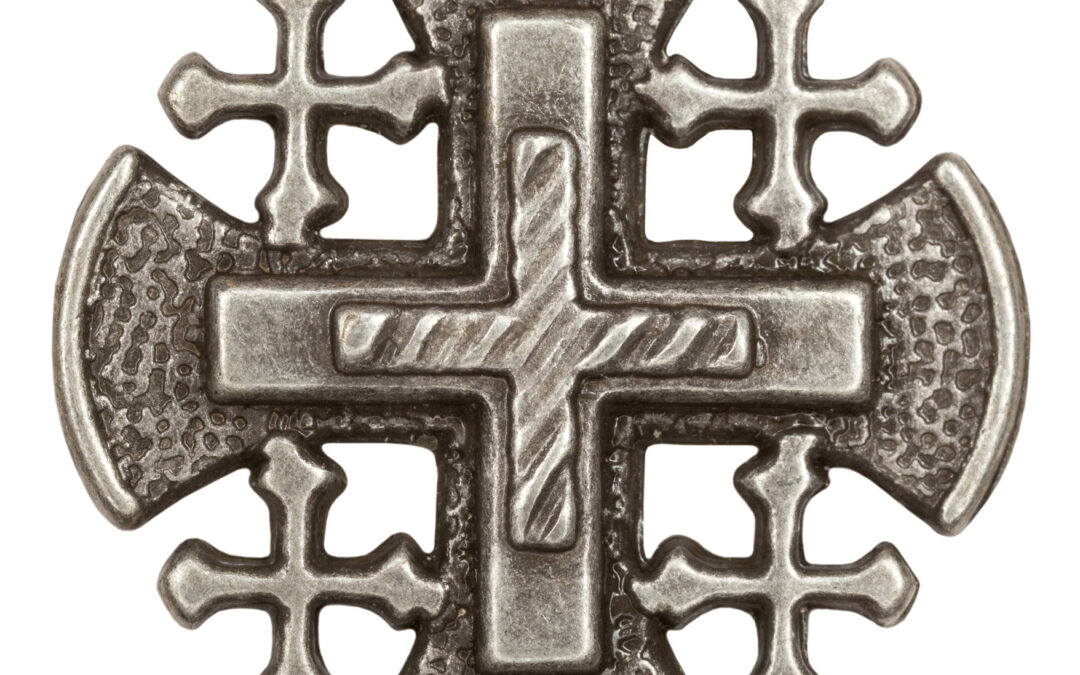The Jerusalem Cross: Historical and Religious Significance
The Jerusalem Cross, also known as the Crusader’s Cross or the Five-Fold Cross, is a Christian symbol with significant historical and religious meaning. It consists of a large central cross surrounded by four smaller crosses in each quadrant, resulting in a total of five crosses. The symbolism and significance of the Jerusalem Cross are as follows:
Historical Significance
The Jerusalem Cross is strongly associated with the medieval Christian Crusades, a series of religious and military campaigns in the 11th to 13th centuries. These Crusades were launched by European Christians to recapture the Holy Land, including Jerusalem, from Muslim control. The Jerusalem Cross became a symbol of these Crusades and the Christian presence in the Holy Land.
Religious Significance
The five crosses in the Jerusalem Cross have various interpretations:
- The central cross represents Christ and His sacrifice on the cross for humanity.
- The four smaller crosses represent the four Gospels (Matthew, Mark, Luke, and John) and the spreading of the Christian message to the four corners of the Earth.
- Some interpretations also associate the smaller crosses with the wounds of Christ (hands and feet).
Connection to Jerusalem
The name “Jerusalem Cross” comes from its association with the city of Jerusalem. It was used as a symbol by the Crusaders who sought to reclaim Jerusalem as a Christian holy city. The five crosses in the design represent the Christian connection to Jerusalem and the goal of the Crusades.
Modern Usage
Today, the Jerusalem Cross continues to be used as a Christian symbol, especially by Christian communities in the Holy Land and by various Christian denominations worldwide. It is often seen on flags, church banners, jewelry, and other religious items. It serves as a reminder of the historical and religious significance of Jerusalem to Christians.
Ecumenical Symbolism
The Jerusalem Cross is sometimes used as an ecumenical symbol, promoting unity among different Christian traditions and denominations. Its five-fold design can be seen as a representation of the diversity and unity within Christianity.
In Summary
The Jerusalem Cross holds historical significance related to the Crusades and the Christian presence in Jerusalem, as well as religious symbolism tied to Christ’s sacrifice and the spread of the Christian message. It continues to be an important symbol in Christianity today.
A modern parallel to the story of the Jerusalem Cross could be the global interfaith efforts aimed at promoting peace and unity among different religious communities. For example, the Parliament of the World’s Religions is an organization that brings together representatives from various faith traditions to foster dialogue, understanding, and cooperation. Just as the Jerusalem Cross symbolizes the unification of different aspects of Christianity and the spreading of the Gospel, modern interfaith movements seek to bridge gaps between religions and promote a message of global harmony and mutual respect.
Wilson Alvarez, a lover of Jesus Christ had an early experience where he had a vision of the Risen Lord & instantaneously became a believer at the prime age of 3. Throughout his young life, he always felt protection and blessings and even though was not walking with the Lord, always acknowledged his blessings. It was when he turned 30, that he became a follower and prayed based on John 3:3 – “In order to enter the Kingdom of God, you must be born again.” Mr. Alvarez enjoys Men’s ministries and is active in the prison ministry movement where he gives weekly leadership and Christian talks. For ministry opportunities, please reach him at info@godsfishermen.org
